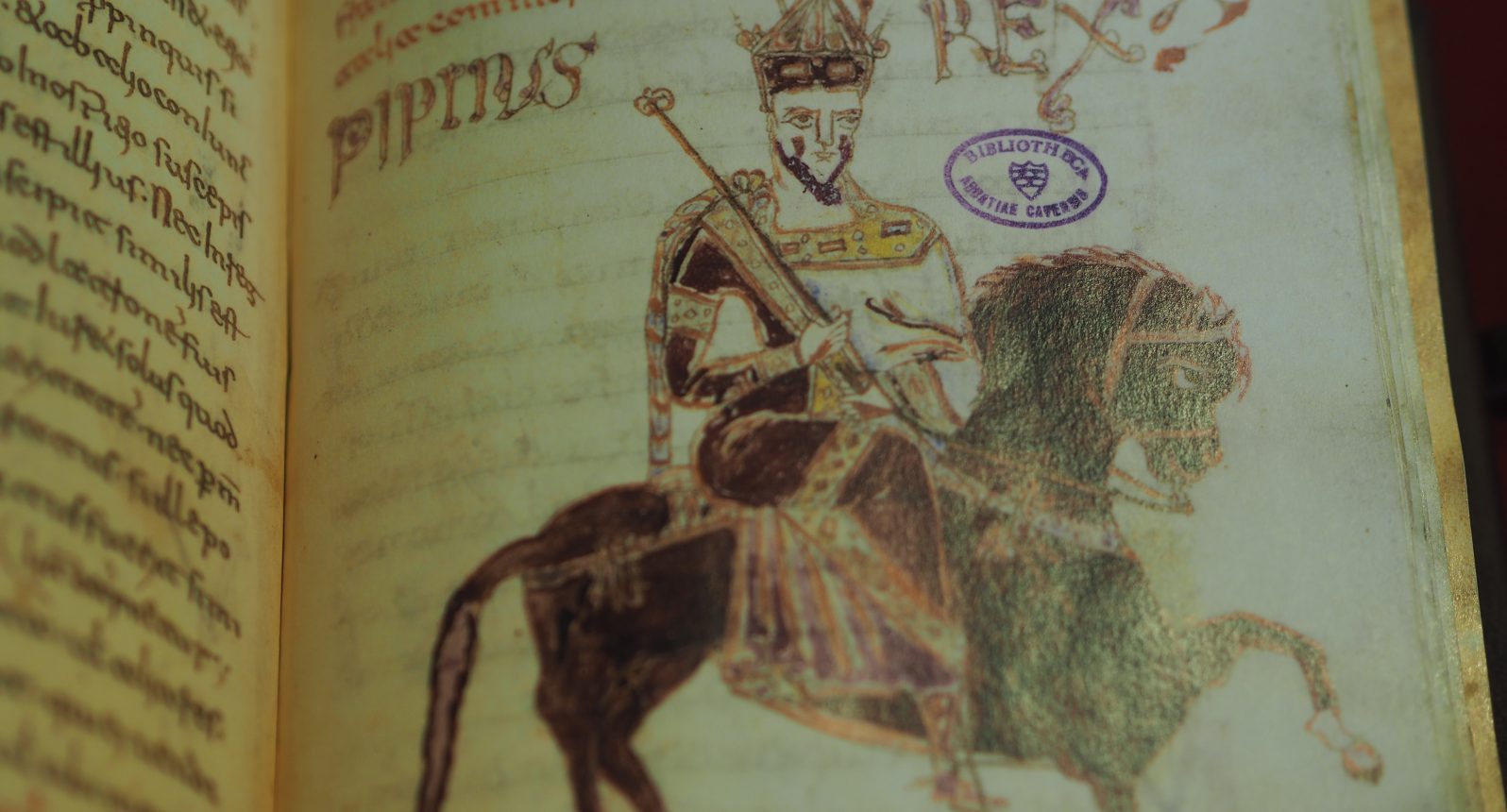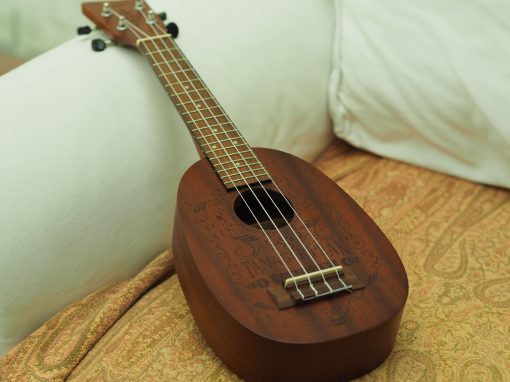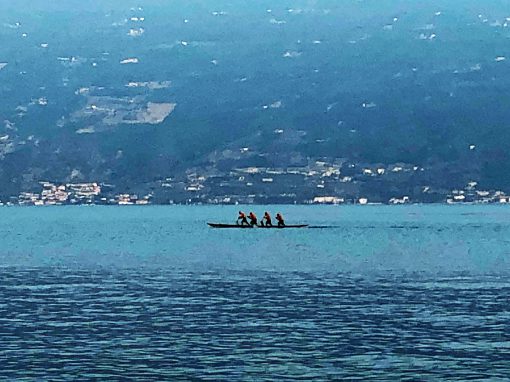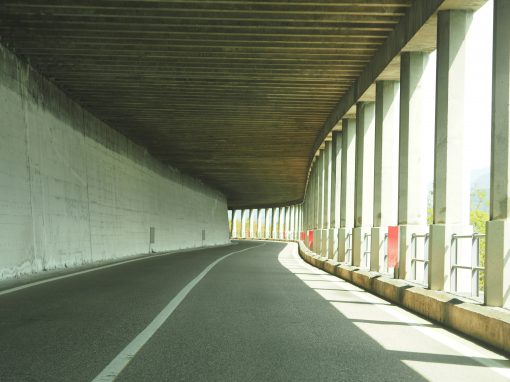It has been over three weeks since we returned from our West EU Tour. And as we keep sharing the stories of our trip with family and friends, we realize that we keep circling around certain main subjects in every conversation.
I find it quite difficult to prioritize one over the other, because they appear all relevant to me and are somehow connected, but as I have to start somewhere, I would like to start with the history of Western Europe; maybe because it was the first to impose its relevance on us during our trip, and it was around us everywhere we went and challenged our perception and understanding on an everyday basis.
The starting point
This is probably one of the main differences to our North America trip in 2017. The history of the USA starts with the landing of the Mayflower 400 years ago. Certainly, this excludes the history of the Native Americans and therefore highly arguable as a statement, but when it comes to recorded history as such based on written documents next to artefacts and other historic evidence, it may be fair to say that this chapter only starts in the early 17th century on Cape Cod. And in the Western parts of the USA and Canada, it starts even much later, in some places only in the early 1900s. Which to the traveler means: There is just less to deal with on that level. And that, together with the vast and wide landscape of the North American West where you will drive hundreds of miles without any relevant settlement, creates an open space for the mind to wander about, or – to put it plain and simple – to relax the mind.
Not so in Europe, or, as far as our trip is concerned, in Western Europe. It is just packed with settlements and history that are thousands of years old, cities, villages, castles, churches, monasteries, battlefields, memorials, cultures and languages, all related and all different, and it takes quite an effort to move along your itinerary without being held up by what is around you, because it has so much to tell and triggers so many thoughts and ideas. In other words: It is overwhelming. Just look at the map.
As we took off in Berlin at the end of June, our main goal was to show our children the current environment that we live in together with all the liberties the EU offers. We wanted to show the kids that the EU has created the best environment ever for Europeans to live in. But it became evident on our third day already that we were also embarking on a journey through the history of our Western European continent, and to a certain degree, it was like a journey back in time, to the end of the Western Roman Empire.
The German occupation
It started with a dark chapter in recent history. It was in the Netherlands, where we were confronted with the history of the German occupation during World War II for the first time on our trip. Our host’s father and grandfather had been sent to German forced labor and concentration camps and has suffered immensely, together with their families. We sat at the breakfast table when the subject came up in the context of our conversation. I was in tears. My children saw me and asked my wife what was happening. And so, we started to introduce them to this dark chapter of our German heritage. It had been a brief topic on prior occasions but never that profoundly, given the children’s young age.
On our way out of the Netherlands and to Brussels, my 7-year-old daughter suddenly remarked from the back seat of our car:
“Daddy, it’s quite a miracle that we are so well received here after all the pain and suffering our ancestors have brought over this part of the world.”
Words failed me and I could only take my little girl’s hand in silence.
We came to realize that but for our excursion to Spain, our trip led us along many Western battlefields of two World Wars. And even though this chapter of our history is so deeply engraved in our DNA, we still had not expected to be so heavily exposed to it, probably because it makes a difference, whether you know something out of history books and novels and even movies, or whether you are actually confronted with individual tragedies. We had similar experiences in particular in France.
We also drove or hiked along various sites that tell their individual stories of this time of mad terror and oppression: the Ardennes, for instance, where the German Wehrmacht, in an attempt to reconquer lost grounds after the invasion of the Allied powers in June 1944, started the so-called Ardennes Counteroffensive or Battle of the Bulge in December 1944, which lasted for a little over a month and cost 17,000 German and 20,000 Allied troops their lives, not counting the missing and the wounded (roughly 120,000 on both sides). Or the “Barraque des Allemands”, a mountain cabin in the middle of nowhere in the Pyrenees, which was built and operated by the Germans to capture Jewish or other victims of the Nazi Regime who were trying to escape to Spain through the mountains. And you just cannot but think what the hell they were thinking and what madness drove them.
It is weeks later, shortly after our return to Berlin, on the occasion of a funeral we attend on the Waldfriedhof Zehlendorf, a very large pine tree covered cemetery in the South West of Berlin, that we discover an Italian war cemetery with over one thousand graves of Italian soldiers who had been interned in 1943 after the alliance between Germany and Italy had been called off and who were massacred by SS troops at the very end of the war. It just leaves you speechless and praying that this shall never happen again and that the peace which the European Union has safeguarded for over 70 years now, be strong and everlasting. It is not to be taken for granted.
Certainly, this more recent part of our European history played a dominant role during our trip, and as you can see, continues to dwell in me even stronger, now that we have returned to our everyday lives.
From the Golden Age in the Netherlands to the Visigoths in Spain
But other times in history marked our journey just as well. And as I explained that we started off with the chapter of the German Reich and Word War II while in the Netherlands, we were also exposed to the so-called Dutch Golden Age in the 17th century. The paintings of Rembrandt may serve as example to demonstrate the powerful mindset at the time.
We continued to travel back in time to the 14th and 15th century in Burgundy, where we dealt with the “ducs de Bourgogne”, and further south-west in the Périgord, where the Hundred Years War between England and France has left its traces until today, and – although that breaks the rule of looking at recorded history only – where the hommes de Cro-Magnon left their traces in caves, such as the grottes de Villars, which we visited, over 19,000 years ago.
When in Spain, we (briefly) stumbled across the roughly 700 years of Moor occupation of the Iberian peninsula from the 8th to the 15th century as well as the earlier migration of the peoples such as the Visigoths and the Vandals down to the 5th century following the collapse of the Western Roman Empire. The migration of the peoples, a chapter in history that I had pretty much ignored in high school and no interest in at all. It turns out, it is not only a fascinating story of cultural clashes, dominance and assimilation over the course of hundreds of years, but a highly relevant one for the development of our European nations as they stand today.
The experience was similar in Pavia, where we inspected the so-called “Liber Papiensis”, a (handwritten) 11th century compilation of the laws of the Lombards, the Carolingians and the Ottonians, dating back far into the 7th century.
The children’s perspective
The children were both playing their part in this discovery. Next to my daughter’s astonishing comment above, our son showed great interest in particular in the history of Spain, especially the period of the Reconquista as well as the War of the Spanish succession a little over 300 years ago, which marks a moment in time when the major European colonial powers in a largely colonized world were fighting over more power and access to resources. Sounds somewhat familiar, when I look at our times.
I recall driving in the car from the Costa Blanca to Tortosa in the North of Catalonia and my wife reading parts of Spanish history from a travel guide to us. All of this triggered by my 7-year-old son who had been telling us about the “Song of Roland”, which he knew already from an audio book, an epic poem about the battles between the armies of Charlemagne and the Moors in the 8th century. He was eager to learn the true historic content of this saga and kept asking for more information which we ultimately were unable to provide. It was fascinating to see how this little guy connected to the subject.
Filling the gaps
All this history has contributed to how we live today in Western Europe, what languages we speak, what cultures we have developed and what societies we have built. And I have realized once more how little I know about the history of the part of the world I live in. I don’t know yet when and how I will fill these gaps, but I know that I want to, also because it places the issues of our times in another, more humble perspective.




